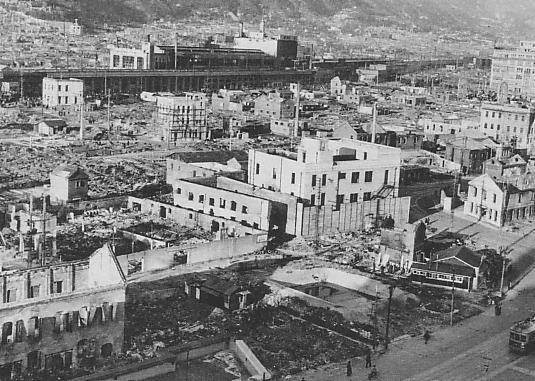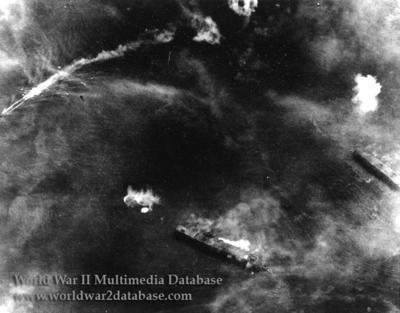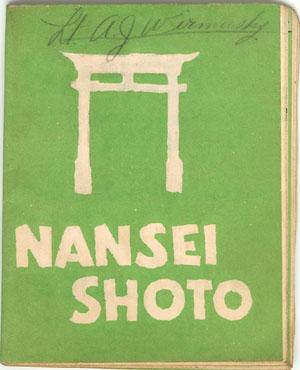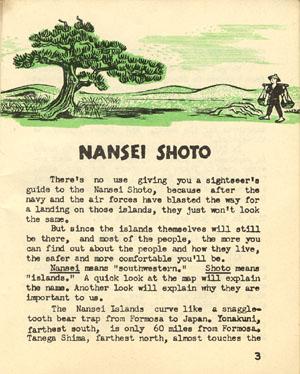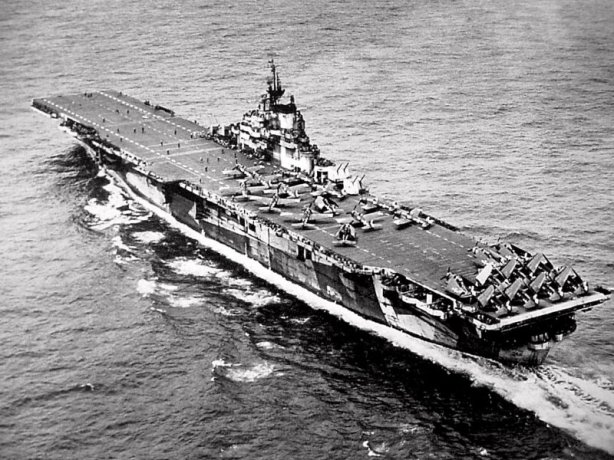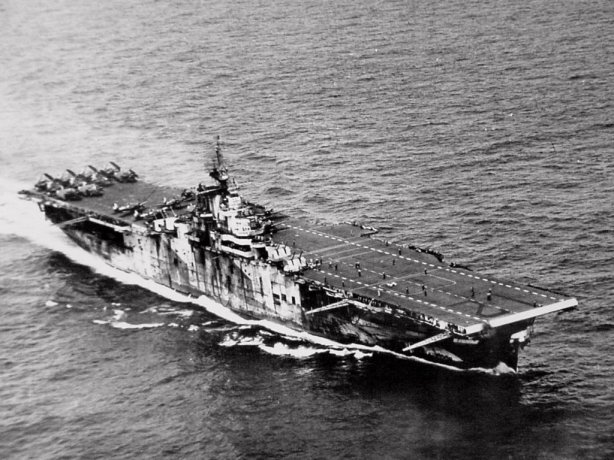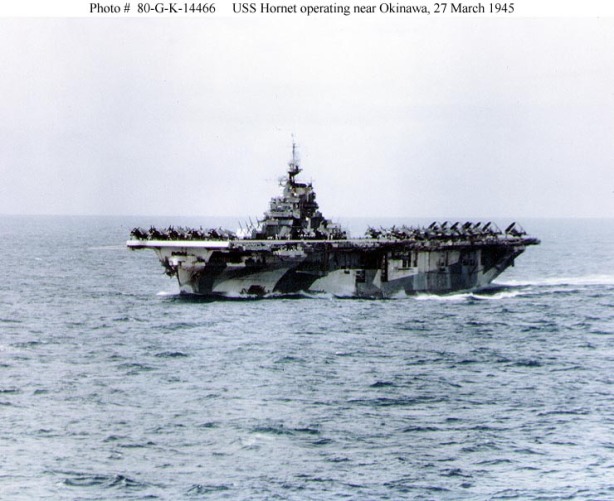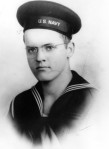
John T. Ryan US Navy
It is April 1945, the world is still at war and my father, Seaman First Class, John Thomas Ryan is still serving on the USS Hornet (CV-12). In my last posts, I covered the Battle of Iwo Jima and other events in February and March 1945 leading up to the Battle of Okinawa. This post will be the first for the Battle of Okinawa and cover April 1945.

The Battle of Okinawa, codenamed Operation Iceberg, was fought on the Ryukyu Islands of Okinawa and was the largest amphibious assault in the Pacific War of World War II. The 82-day-long battle lasted from early April until mid-June 1945. After a long campaign of island hopping, the Allies were approaching Japan, and planned to use Okinawa, a large island only 340 mi (550 km) away from mainland Japan, as a base for air operations on the planned invasion of Japanese mainland (coded Operation Downfall). Four divisions of the U.S. 10th Army (the 7th, 27th, 77th, and 96th) and two Marine Divisions (the 1st and 6th) fought on the island. Their invasion was supported by naval, amphibious, and tactical air forces.

USS Hornet (CV-12) operating near Okinawa, 27 March 1945. The ship is painted in camouflage Measure 33, Design 3a.
Official U.S. Navy Photograph, now in the collections of the National Archives (photo # 80-G-K-14466).
The battle has been referred to as the “typhoon of steel” in English, and tetsu no ame (“rain of steel”) or tetsu no bōfū (“violent wind of steel”) in Japanese. The nicknames refer to the ferocity of the fighting, the intensity of kamikaze attacks from the Japanese defenders, and to the sheer numbers of Allied ships and armored vehicles that assaulted the island. The battle resulted in the highest number of casualties in the Pacific Theater during World War II. Based on Okinawan government sources, mainland Japan lost 77,166 soldiers, who were either killed or committed suicide, and the Allies suffered 14,009 deaths (with an estimated total of more than 65,000 casualties of all kinds). Simultaneously, 42,000–150,000 local civilians were killed or committed suicide, a significant proportion of the local population. The atomic bombings of Hiroshima and Nagasaki together with the Soviet invasion of Manchuria caused Japan to surrender less than two months after the end of the fighting on Okinawa.
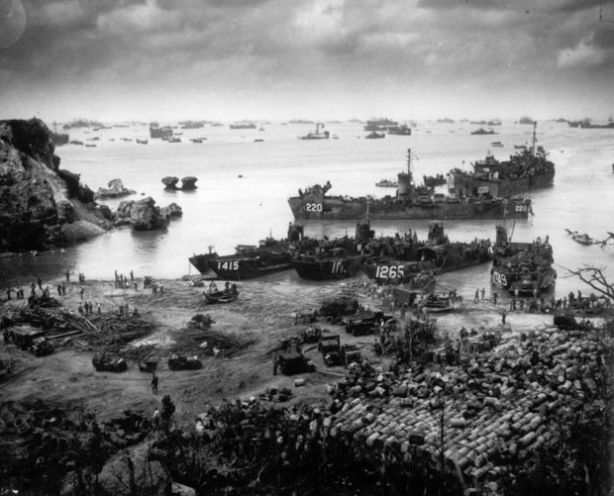
Nimitz reveals to the world the news of U.S. invasion of Okinawa, 325 miles from Tokyo. (AP Photo/U.S. Navy)
According to the USS Hornet (CV-12) ship’s log:
1 April 1945 – This was LOVE Day of the operations against Okinawa and the Task Group’s mission was to support the landing operations.
2-6 April 1945 – Operations continued in support of the Okinawa landing operations.
7 April 1945 – The Task Group moved slowly northward to contact the enemy fleet units reported in teh area. The enemy force was discovered and consisted of the BB Yamato, two light cruisers, and ten destroyers. The Hornet’s planes wer the first to attack.
6/7 April 1945 – Okinawa Invasion. During the period more than 500 Japanese planes attacked task force. Of the 152 shot down, HORNET scoreboard tallied more than one third of the kills.
8 April 1945 – Rendezvous was made for refueling and replenishment of ammunition.
9 April 1945 – Continued Strikes

Sixteen F6F Hellcats from VF-17 running up their Pratt & Whitney R-2800’s on April 6, 1945 to attack the Japanese battleship Yamato and her escorts.
7 Apr 1945 – HORNET pilots find and conducted initial attacks on the largest Japanese battleship YAMATO which is left sinking.
8 April 1945 – Rendezvous was made for refueling and replenishment of ammunition.
9 April 1945 – Continued strikes in the vicinity of Okinawa in support of our invasion forces.
12 April 1945 – Continued CAP over airfields at Kikai Shima and Tokuno Shima in order to deny their use to the enemy.
14-16 Apr 1945 – HORNET aircrews downed more than 60 Japanese planes along Kyushu.
12-27 April 1945 – Repeated strikes were made on Okinawa and the islands in teh vicinity. During the whole operation the Task Group was under constant enemy air attack.
30 April 1945 – The Ship entered Ulithi Harbor and anchored.
From the war diary found on the website, Fold3:
East Sunday, 1 April 1945, was LOVE Day of the operations against Okinawa and the Task Group’s (58.1) mission was to furnish air support to forces of Task Force 51 which were making the initial landings. These strikes continued with scattered enemy air assault. Friday, 6 April 1945 was a “Field Day”. The Hornet fliers shot down 53 enemy planes, and the ship’s personnel were at General Quarters most of the day, dodging the “Banzai Boys”.

Hornet under attack as seen from Bennington (CV-20), April 1945. Photo by Lowell Love.

USS Hornet (CV-12), along with USS Bennington (CV-20), shooting down a kamikaze off Okinawa, April 1945.
Early on the morning of 7 April 1945, Navy search planes far to the north reported the incredible feet that an enemy task force, comprising the heaviest and fastest warships Japan still possessed, had left its bases in the Inland Sea, steamed stealthily along the coasts of Kyushu during the night and was now headed into the East China Sea. The entire Task Force (TF 58) raced northward at top speed, and shortly after noon flight quarters sounded and the planes were launched. The Yamato was mortally wounded by eight torpedo hits and eight 1000 lb. bombs, racked by a series of tremendous explosions and sank beneath the waters of the China Sea less than sixty miles from Kyushu, her guns blazing to the very end. Two cruisers and three destroyers shared her fate, while the remaining six destroyers, heavily damaged, were left burning in the water.
!["A Kamikaze just misses USS Hornet. This picture was taken on the USS Hornet (CV-12) off Okinawa during April 1945 by Photographer’s Mate 2/c Paul D. Guttman, and it was definitely not taken with a telephoto lens! The black specks visible in the midst of the blast aren't flaws in the film, they're bits of shrapnel from the exploding plane. Paul was knocked unconscious by the blast, and came to later, in sick bay. He wasn't even aware that he'd taken this picture until sometime later, after the film was developed!" "The other carrier visible in the background, wreathed in smoke from the firing of her own AA guns, is supposedly USS Intrepid (CV-11) [(?)]."](https://afatherswarstorynevertold.files.wordpress.com/2015/08/0212av.jpg?w=614&h=489)
“A Kamikaze just misses USS Hornet. This picture was taken on the USS Hornet (CV-12) off Okinawa during April 1945 by Photographer’s Mate 2/c Paul D. Guttman, and it was definitely not taken with a telephoto lens! The black specks visible in the midst of the blast aren’t flaws in the film, they’re bits of shrapnel from the exploding plane. Paul was knocked unconscious by the blast, and came to later, in sick bay. He wasn’t even aware that he’d taken this picture until sometime later, after the film was developed!”
“The other carrier visible in the background, wreathed in smoke from the firing of her own AA guns, is supposedly USS Intrepid (CV-11) [(?)].”
Later that afternoon (7 April 1945), two twin-engined enemy Frances’ got through the Task Groups protecting patrol and pounced upon the formation. They were detected and blasted out of the air within a few thousand yards of the Hornet due to the expert marksmanship of the Hornet’s gunners.
The next several days saw the Hornet’s Air Group ranging up and down the Ryukyu chain, striking at opportune targets. Kikai, Tanoga Shima, Amami O Shima, enemy ground forces on Okinawa, and even Kyushu itself felt the burning sting of our strafing, bombs, and rockets. On Saturday, 14 April 1945, two Bettys carrying rocket planes were shot down. This rocket plane with rider is called “Baka”, the Japanese name for fool. Also on 14 April 1945, one of the patrols shot down 18 planes which were trying to reach our force. In the afternoon two planes were splashed by ship’s gunfire. Sunday and Monday, 15, 16 April 1945 were also days of accomplishment. The ship was at General Quarters most of the time. From late Sunday night to early Monday morning the ship was under constant attack in the light of flares almost as bright as day, and much credit goes to the night fighters for their skill in breaking up attacks before the enemy could get in on us. Monday, 16 April 1945, was another “Field Day” for the Task Group. Here is an itemization of the results:
- Early in the morning one of the night fighters shot down a Betty, and ship’s gunfire bagged a low flying heavy enemy plane.
- Sweeps to Kyushu shot down out of the air fourteen single-engined planes, burned ten on the ground and seriously damaged ten planes which did not burn.
- The 16 April 1945 saw a total of seventy two airborne planes shot down by this Task Group.
- No pilots were lost that day.
From the 18 – 27 April 1945 continuous strikes were made against the areas of Kikai-anami, Tokuno, Okinawa, Minami, Daito Jima, and Kita Daito Jima. Napalm was dropped on several of these strikes with generally good results. The Task Group began retirement towards Ulithi on the 27th and anchored in the Ulithi Harbor on the 30 April, 1945.
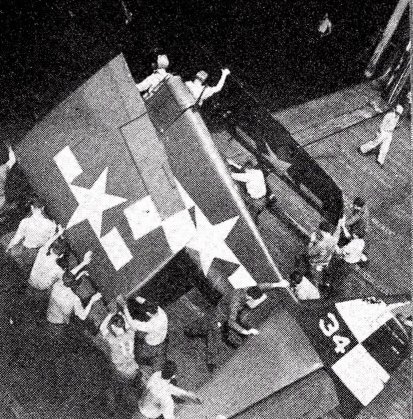
Unique shot of a VF-17 Hellcat being lowered down Hornet’s deck edge elevator showing her geometric tail and wingtip design, April 1945.
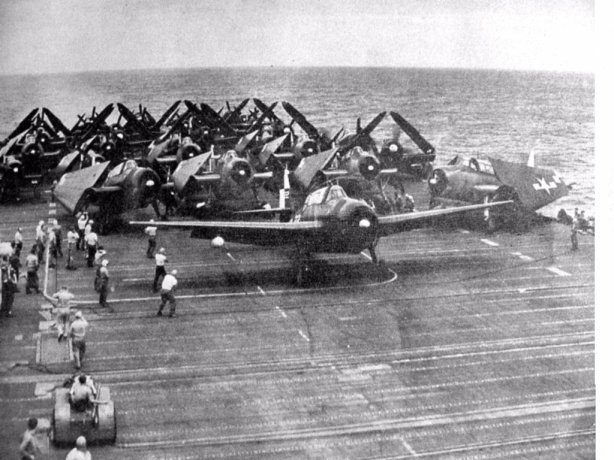
A grainy shot of Hornet’s TBM Avengers and SB2C Helldivers from Air Group 17 preparing for launch, April 1945.
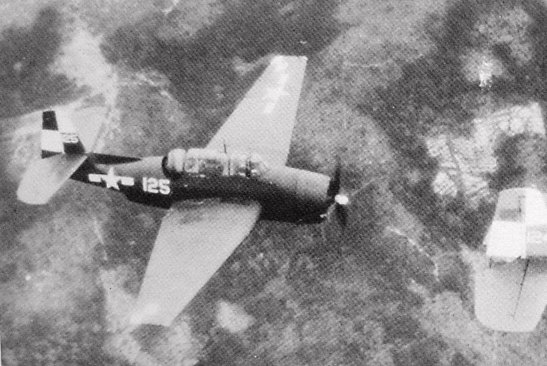
TBM-3 Avengers from VT-17 attacking targets around Tokyo, possibly in April 1945.

Forward flight deck view, from the port side, of the island of USS Hornet (CV-12) in April 1945. Grumman F6F Hellcat fighters from Fighting Squadron (VF) 17 “Jolly Rogers” can be seen on deck, as well as the bridge superstructure with its radar antennas, 40-mm and 5″ gun mounts.
National Archives and Records Administration (NARA) photo, # 80-G-469299.




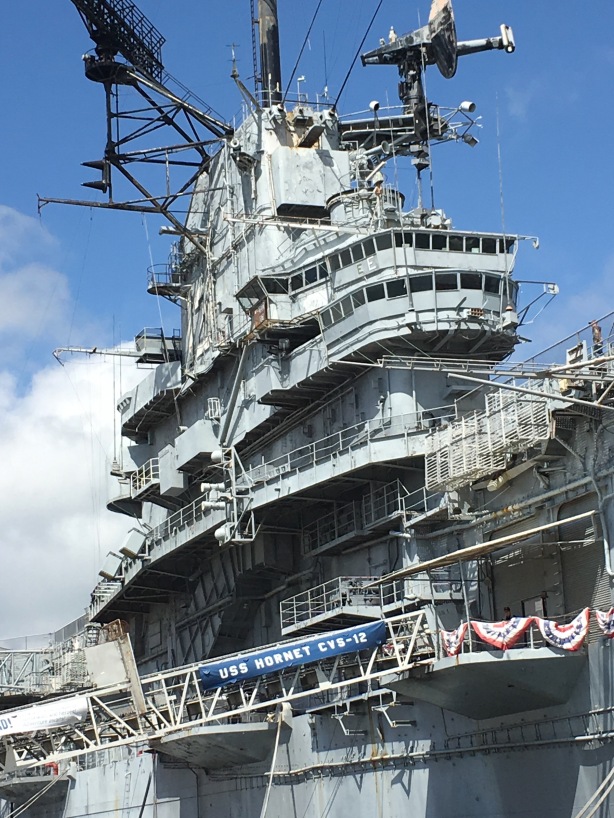

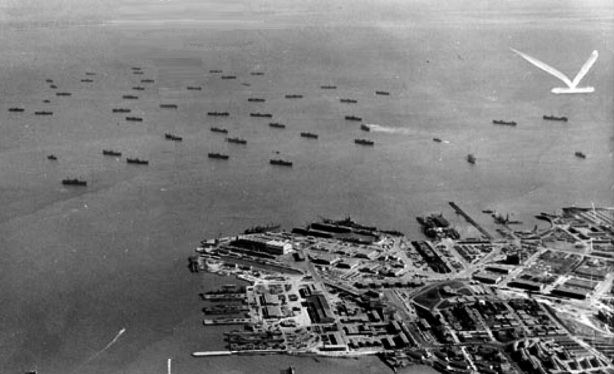
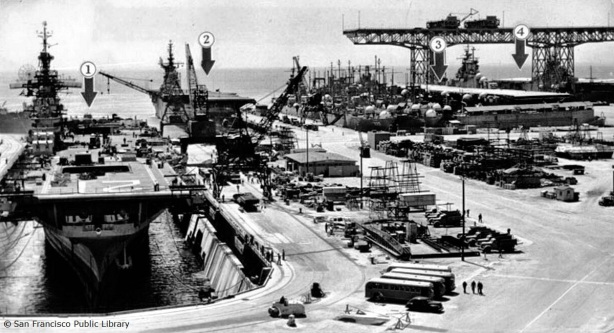




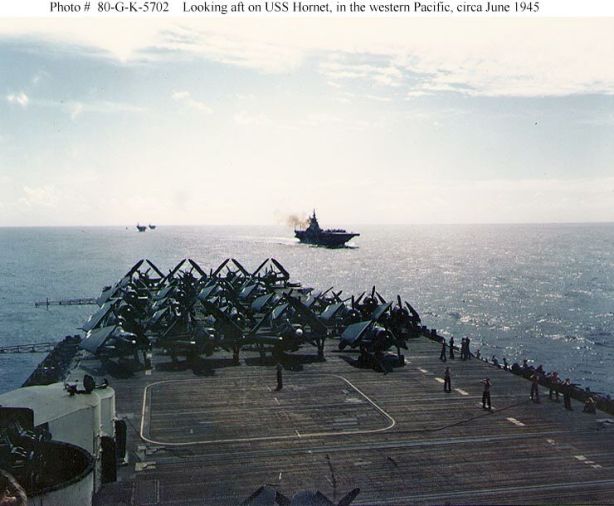
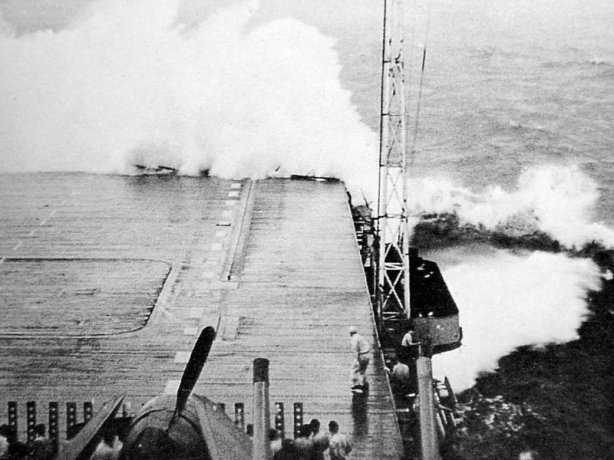
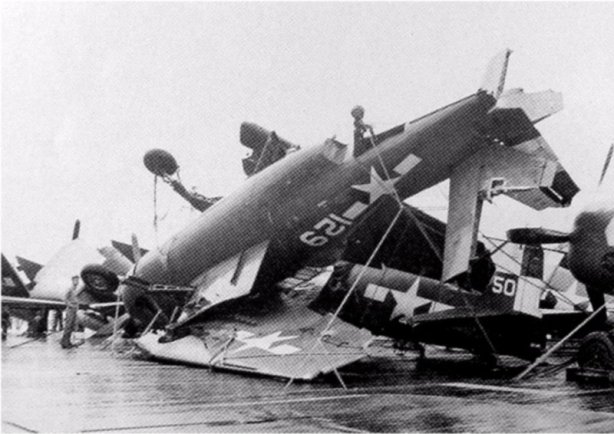
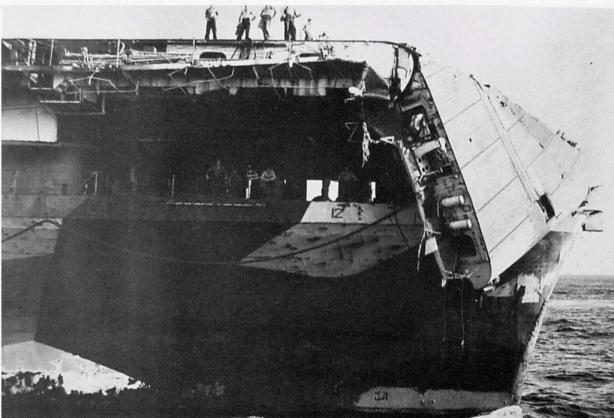







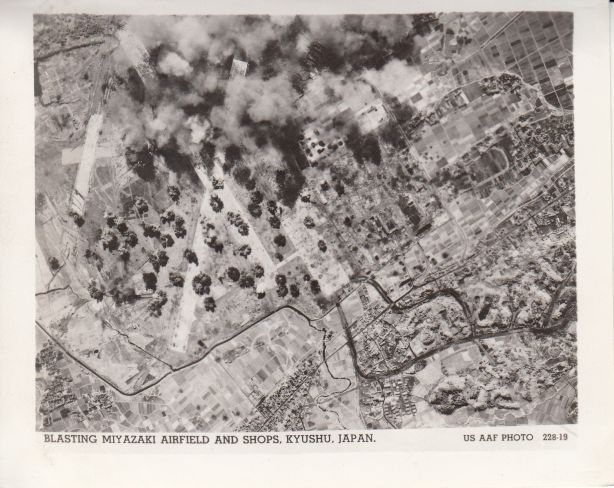

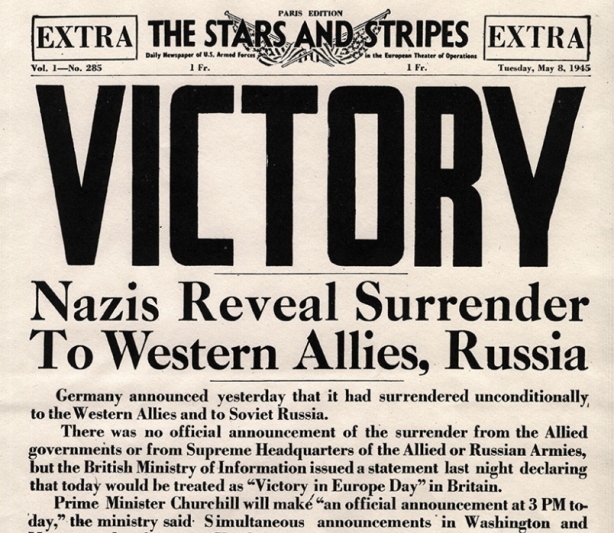
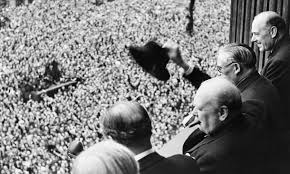

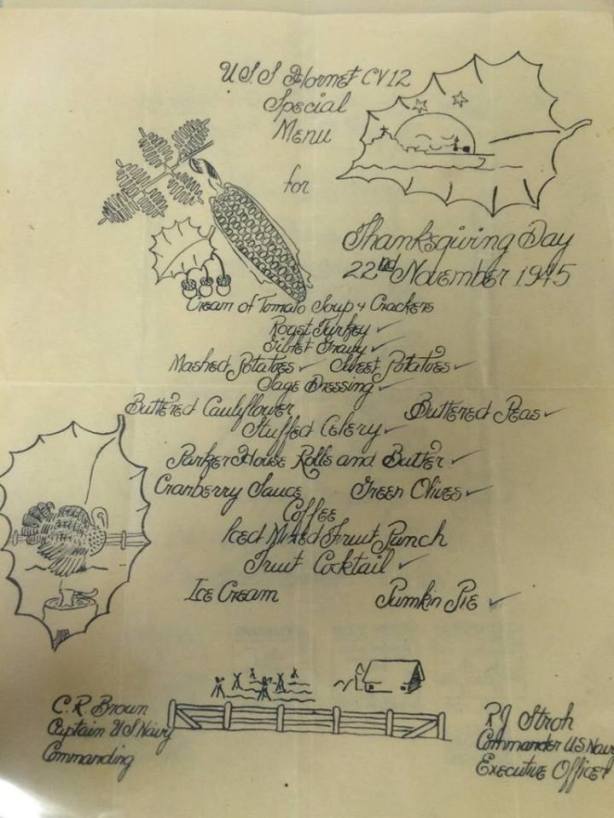





!["A Kamikaze just misses USS Hornet. This picture was taken on the USS Hornet (CV-12) off Okinawa during April 1945 by Photographer’s Mate 2/c Paul D. Guttman, and it was definitely not taken with a telephoto lens! The black specks visible in the midst of the blast aren't flaws in the film, they're bits of shrapnel from the exploding plane. Paul was knocked unconscious by the blast, and came to later, in sick bay. He wasn't even aware that he'd taken this picture until sometime later, after the film was developed!" "The other carrier visible in the background, wreathed in smoke from the firing of her own AA guns, is supposedly USS Intrepid (CV-11) [(?)]."](https://afatherswarstorynevertold.files.wordpress.com/2015/08/0212av.jpg?w=614&h=489)




